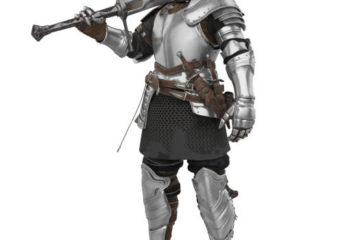What Size Glasses Are Right for Your Face?

by LAURA JEEVES 04/19/2022
The size of your glasses may not be the first thing you think of when you’re looking to buy a new pair of designer specs. Instead it might be style or colour, but in order to achieve the perfect fit for your face shape and everyday bifocals, you must consider the size of the frames. If you’re making the investment in designer eyewear and buying a new pair of Lindberg glasses or Chloe shades, for example, then you want to make sure you’re getting it right!
Appreciating how your eyewear can complement your features is key when purchasing the right frames for you. However, it’s not just how the size appears on your face that’s important, as well-fitting glasses will create a sense of visual balance too.
Understanding Your Measurements
Inside each pair of glasses there is a small set of numbers which indicate your measurements. These represent the lens diameter, the bridge width and the side length, all of which should ensure that your glasses fit perfectly. The side length is usually one of three standard sizes and ensures the specs sit comfortably over your ears. The gap above your nose between the lenses is your bridge width, and just like the side length, it’s important that this measures right for you. Lastly, the lens diameter is the width of the lens measured from the bridge. This can be influenced by your frame style, size and prescription, but also can be a matter of personal preference.
How Your Glasses Should Fit
Whether you’re investing in a new pair of Marni, Calvin Klein or Lindberg glasses, the correct fit of your frames should be a priority before you buy. If you’re unsure, make sure the top of your specs isn’t higher than your eyebrows, and the width of the frames isn’t wider than your face at your temples. Your eyewear shouldn’t rub or irritate your face, so ensuring that the lower edge of the frame doesn’t sit on your cheeks is crucial for maximum comfort. To protect your luxury frames from wear and tear, the arms of your frames should be long enough to fit securely around your ears, meaning that you can move and shake your head without them slipping out of place.
What to Look Out For
There are multiple things we might notice about our glasses that ultimately mean they’re not the right size for our face. Here’s what you should pay attention to…
– Many brands, such as Lindberg glasses, feature nose pads in their designs. Are yours leaving marks at the top of your nose? They might be set incorrectly, causing painful pinching. It might also mean that your bridge width needs remeasuring.
– Do your specs slide down your nose? Perhaps try bifocals best suited for lower nose bridges, like rectangular or horn-rimmed frames.
– Are you left with marks on your cheeks after wearing your specs? You might need to readjust the side length, or even opt for a larger frame.
So, when the time comes for you to invest in a luxury pair of Chloe or Lindberg glasses, you don’t have to tolerate ill-fitting eyewear that’s not the correct size for your face.
Everyone has different measurements which, when implemented into your new frames, ensure optimal comfort and the best visual experience.
Author Plate
David Paul opticians epitomise everything you want from a local eyewear specialist. Not only do they offer eye tests, they provide an expert service that includes OCT testing and advice on buying your ultimate pair of Lindberg glasses, along with many other designer brands. The team of experienced eyewear specialists and expert optometrists are there to make your glasses and contact lens buying experience the best it can be.
amazines.com







No Comment